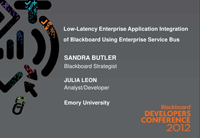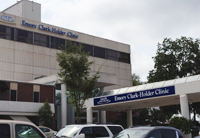
Project Updates
DBA Encrypted Database Offering

Transparent Data Encryption is a new way to protect your data.
The UTS DBA Team is taking advantage of some new features in Oracle 11g to provide a higher level of protection for sensitive data. With features like Transparent Data Encryption, we can have an extra layer of data protection that addresses some concerns related to things like HIPAA-compliance.
Our offering isn't designed to be the only level of data protection and still relies on application logging for auditing and other security procedures as defined by OIT.
Per Oracle, "Transparent data encryption enables you to encrypt individual table columns or an entire tablespace. When a user inserts data into an encrypted column, transparent data encryption automatically encrypts the data. When users select the column, the data is automatically decrypted. After the selection, the data is re-encrypted."
Transparent data encryption helps protect data stored on media in the event that the storage media or data file gets stolen, because it stores the encryption keys in a security module (that is, a wallet) external to the database. Protecting data from this type of theft is required for most compliance regulations. The benefit to using transparent data encryption is that it requires little coding and is quick and easy to implement.
If you have a project that would benefit from an encrypted database for compliance reasons (or paranoia), feel free to reach out to the UTS DBA Team for more information. The team is available via dba@emory.edu or visit their public wiki link at https://wiki.service.emory.edu/display/infrastructure/Database+Administration.
- Jon Helsel, Manager, Enterprise Applications
Unified Messaging Project Completes

Hello? Is there anybody out there?
On July 17, the Unified Messaging (UM) project went fully live. This project moved over 11,000 Emory voice mail accounts from the old Avaya modular messaging system to Unified Messaging in Exchange.
This move also gives users more interoperability with Office 365 as we move forward with that project. Over the years, Avaya had been unable to keep up with the various Exchange upgrades and it became necessary to transition to the more compatible UM solution.
In addition to voice mail, the project team also moved almost 500 fax accounts to the new system.
One of the most visible features of UM is the Voicemail preview, in which users receive recorded voicemail messages in email that includes a loose translation of the voice mail in text form. This is not intended to be an exact transcription, but it allows users to preview the message to look for key names, numbers or phrases (e.g., "Call me back").
UM involved great collaboration between several teams, including Messaging, Network, the Coordinators, the IT Service Management Office (ITSMO), the Project Management Office (PMO) and Emory Healthcare IS (EHC IS).
- Jay Flanagan, Manager, Infrastructure
Blackboard Conference

The Blackboard presentation given by Sandra and Julia.
Julia Leon (Integration) and I presented last year's Blackboard OPUS integration project at the Blackboard Conference last week. Perhaps it's worthy of a mention in the newsletter. You can see the presentation at the link below:
- Sandra Butler, Blackboard Architect, Enterprise Applications
Emory Clark-Holder Clinics Join Emory Network

The Emory Clark Holder Clinic.
UTS recently completed a long project led by Project Manager Keith Rooks (Enterprise Services) and Network Engineer Zachary Wade (Infrastructure) to convert the Emory Clark-Holder Clinics over to the Emory Data network.
Previously the Clark-Holder Clinic facilities only had the Emory network employed for time clock phones and printers.
Emory Clark-Holder Clinic has three locations. The main campus is located in LaGrange, GA and consists of several buildings. Clark-Holder also has a building in West Point, GA as well as a small clinic in Newnan, GA.
For the three sites, UTS installed eleven new data switches and thirty-one wireless access points, added new category-six data cabling, and integrated them into the Emory Network through wired and wireless connections.
- Zachary Wade, Network Engineer, Enterprise Services